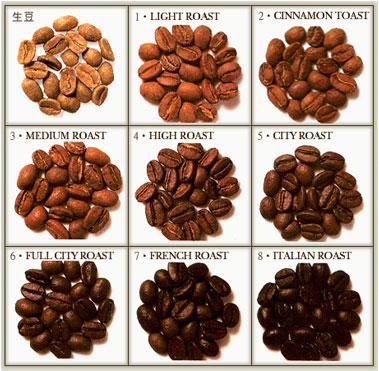Introduction to the characteristics of the Manor producing area with soft and full-bodied Fine Coffee from Rwanda
The provinces prior to 2006 are as follows: Butale (Butare), Biwamba (Byumba), Shanggu (Cyangugu), Gitalama (Gikongoro), Giseni (Gisenyi), Gitarama (Gitarama), basic Gu (Kibungo), Kibuye (Kibuye), Kigali City (Kigali), Kigali-Ngali (Kigali Rural), Ruhengeri (Ruhengeri) and Umtala (Umutara).
A new administrative division will be implemented on January 1, 2006. The whole country of Rwanda is divided into four provinces (intara), the Province de province (intara), the north province (Province du Nord), the western province (Province de province), the southern province (Province du Sud), the city of Kigali (Ville de Kigali) and one municipality (Kigali), with 40 counties and cities (akarere) and 416 townships (umujyi).
Before 1 January 2006, the country was divided into 12 provinces. Later, in order to solve the problems caused by the massacre in Rwanda in 1994, the government decided to reorganize the political district. The first reason is the decentralization of power to the local authorities, because the authorities believe that the excessive concentration of government power is the main factor leading to genocide, and the second is to diversify the ethnic groups in the various districts so as to reduce the division between ethnic groups. [2]
Capital
Located in the central part of Rwanda, Kigali, which was founded in 1907, is the political, economic and cultural center of the country. It covers an area of 730 square kilometers and has a population of 1.13 million (2013), 70 per cent of which are in the suburbs. The city of Kigali, with its pleasant climate, tidy appearance, orderly traffic and good security, is considered one of the safest capitals in Africa, and in 2008 it became the first African city to win the UN Habitat Award. Rwanda has a temperate and tropical plateau climate and, because of its high altitude, its temperature is lower than that of a typical equatorial country. The daily temperature in Kigali, located in the middle of the country, is generally between 12 and 27 °C, with small fluctuations throughout the year. There is also a large temperature difference in some parts of the country, with temperatures lower in the mountainous west and north than in the eastern low-lying areas. Rwanda has two rainy seasons each year, each from February to June and the second from September to October, while there are also two dry seasons, with a longer duration from June to September, often with no rainfall at all. the other lasts from December to February, which is relatively less serious than the previous one. Rainfall varies from region to region, with more rainfall in the west and northwest than in the east and southeast. However, the rainy season pattern has changed as a result of climate change. According to a report by Strategic foresight, the number of overcast and rainy days each year is sometimes smaller, but the rainfall is greater in a short period of time. In other cases, there will be frequent torrential downpours in a single day, more than in the past month combined. In addition, there are cases where the rainy season comes late or ends early.
Rwanda has been growing coffee since colonial times. Although the crops are mainly coffee, the quality of coffee produced in Rwanda is not outstanding, and its status in the coffee world is low, and few people pay attention to it. Most of the coffee varieties grown in Rwanda are bourbon. Rwanda, known as the "country of a thousand hills", has a high-altitude mountain environment, fertile volcanic soil and abundant precipitation, and has a climate conducive to the growth of coffee trees. The advantages of varieties and excellent natural conditions should have produced high-quality coffee, but why the quality of its coffee performance is not satisfactory? The reason lies in the later stage of processing. Improper handling will reduce the quality of coffee and sacrifice a lot of good flavor in vain. Harvesting, planting, processing, grading, transportation and other links will directly affect the quality of raw coffee beans, in which the lack of control in a certain link will become a stumbling block to good coffee. Rwanda coffee is absolutely high quality in terms of its washed Arabica beans. As far as Africa is concerned, its coffee industry is remarkable because the country thrives mainly by producing the best possible coffee beans. Coffee from Rwanda is becoming more and more popular in the international market.
The mission of the Rwanda Coffee Association is to manage and supervise the operation of the coffee industry in Rwanda from production to sale. The recently revised mission focuses on policy formulation and implementation, with more emphasis on the need to improve the professionalism of the coffee industry and to increase marketing efforts. Since the establishment of the Rwanda Coffee Association, it has promoted the Rwandan coffee culture and promoted the influence of Rwandan coffee.
But in any case, the soft and full-bodied taste of the country's coffee is great.

Important Notice :
前街咖啡 FrontStreet Coffee has moved to new addredd:
FrontStreet Coffee Address: 315,Donghua East Road,GuangZhou
Tel:020 38364473
- Prev

Good texture and taste balance the flavor, characteristics, taste and manor of Salvadoran coffee
Salvadoran coffee refers to the coffee produced in the small South American country of El Salvador, where the coffee body is light, aromatic, pure, slightly sour, the flavor is extremely balanced, is a specialty of Central America. With sour, bitter, sweet and other taste characteristics, the best baking degree is moderate, deep. The characteristics of Salvadoran coffee are sour, bitter, sweet, mild, moderate and well-balanced.
- Next

Fragrant and delicious acidity is moderate Nicaraguan coffee flavor, characteristics, taste and manor
Nicaragua: Nicaraguan coffee flavor characteristics: moderate acidity, fragrant and delicious. Nicaraguan coffee of high quality is in the forefront of coffee beans in the world and enjoys a good reputation. Its particles are moderate in size, mild in taste and very aromatic and mellow. Nicaragua is located in central Central America, bordered by the Pacific Ocean to the west and the Caribbean Sea to the east. The highland in the north and the coastal plain in the east, belonging to Central America.
Related
- Detailed explanation of Jadeite planting Land in Panamanian Jadeite Manor introduction to the grading system of Jadeite competitive bidding, Red bid, Green bid and Rose Summer
- Story of Coffee planting in Brenka region of Costa Rica Stonehenge Manor anaerobic heavy honey treatment of flavor mouth
- What's on the barrel of Blue Mountain Coffee beans?
- Can American coffee also pull flowers? How to use hot American style to pull out a good-looking pattern?
- Can you make a cold extract with coffee beans? What is the right proportion for cold-extracted coffee formula?
- Indonesian PWN Gold Mandrine Coffee Origin Features Flavor How to Chong? Mandolin coffee is American.
- A brief introduction to the flavor characteristics of Brazilian yellow bourbon coffee beans
- What is the effect of different water quality on the flavor of cold-extracted coffee? What kind of water is best for brewing coffee?
- Why do you think of Rose Summer whenever you mention Panamanian coffee?
- Introduction to the characteristics of authentic blue mountain coffee bean producing areas? What is the CIB Coffee Authority in Jamaica?

